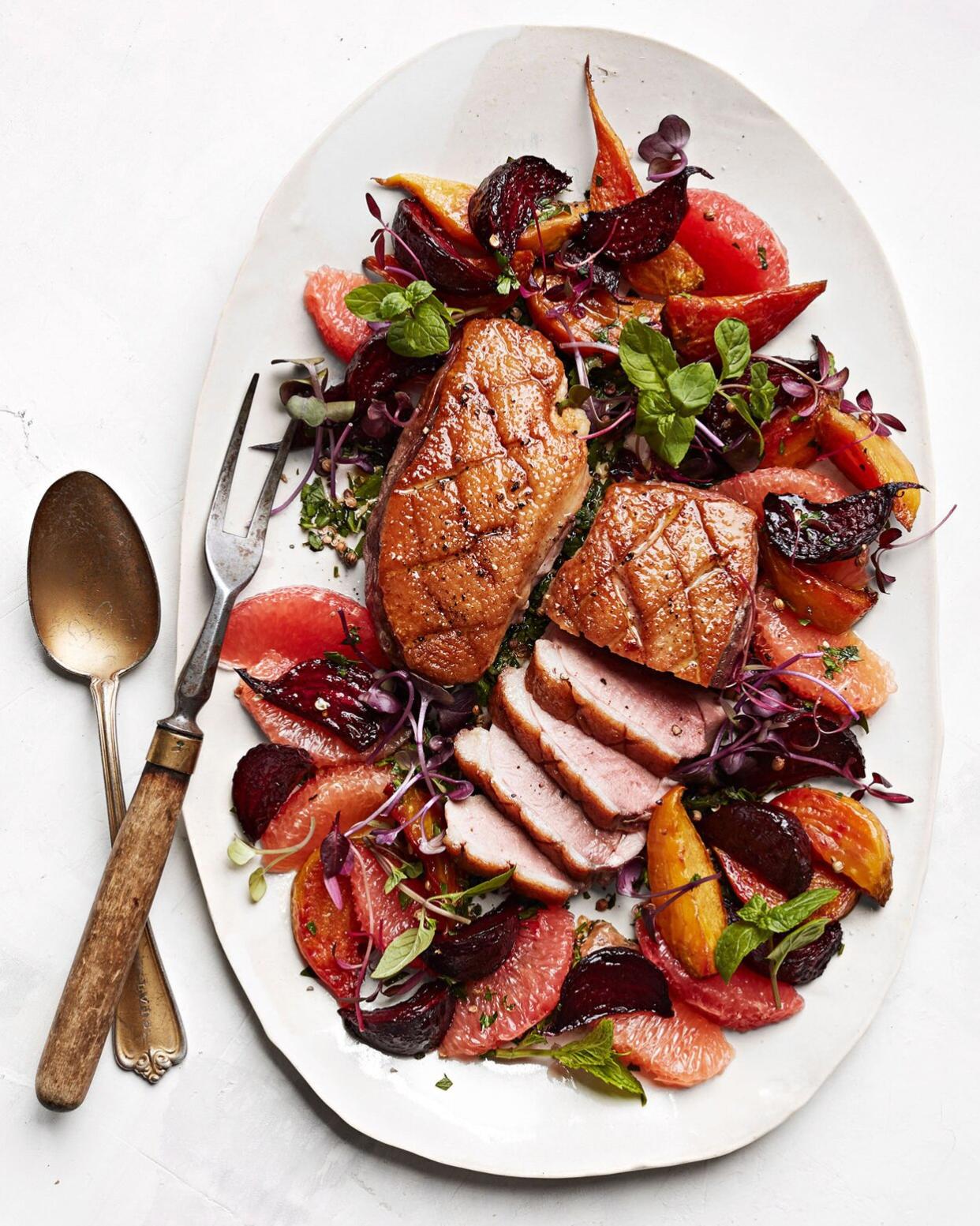All About Duck: From Shopping for Different Cuts to Proper Cooking Techniques, Here's What You Need to Know

Lennart Weibull
While most home cooks gravitate towards chicken or turkey when they want to prepare poultry, there's another meat that is under-utilized and absolutely delicious: duck. "Duck is overshadowed by the easier-to-find, often cheaper, and assumed to be 'understood' products. However, duck is the most versatile bird to cook with. It is popular in so many cultures but has not yet had its day, outside of fine dining, to the masses in the states," says chef Jennifer Chamberlin of Hudson Valley Foie Gras, a poultry farm and producer of duck products. From duck breasts to duck legs to whole ducks, there are so many delicious ways to cook this dark, delicate meat. Below, we explain what to look for when shopping for duck and guide you through cooking different cuts.
Related: Understanding Beef Cuts and Knowing What to Look for When Buying Fresh Meat
Shopping for Duck
When purchasing duck in the grocery store or butcher shop, look for antibiotic-free, air-chilled, and certified cage-free duck. Once you bring duck home, use it within three days unless it's frozen. Like most meat, Chamberlin says that duck should smell a bit sweet and not too gamey. "The skin should be wet but not slimy," she says. For ready-to-eat prepared duck products such as salami, sausage, mousse, or pâté, look for minimal ingredients so that the flavor and quality of the duck shine.
Different Cuts of Duck
The most popular and readily available cuts of duck include duck breast, duck legs, and whole duck. You may also find duck eggs or duck fat, which can be used for cooking; try using it in our Duck Fat-Roasted Potatoes or even in place of olive oil when cooking fried eggs.
Duck Breasts
"Duck is a darker meat for poultry and should only be cooked to medium-rare or medium (approximately 145°F on a meat thermometer)," says Chamberlin. To prepare duck breast, such as ur Duck Breasts with Port Reduction Sauce, start by scoring the skin, which will allow the fat to render and the meat to cook through. Thoroughly season each side with salt and pepper, then place the duck skin-side down in a skillet over medium-low heat. Cook for approximately five minutes then flip and cook for an additional three minutes until the meat has caramelized. Boneless duck breasts shine in this stunning recipe for Warm Duck Salad with Caramelized Beets; with hearty beets and winter citrus, it's the perfect main course for your holiday celebration.
Duck Legs
Chamberlin calls duck legs the "most delicious dark meat." One of the most popular preparations of duck legs is duck confit, a French technique that translates to cooking the duck in fat. The process starts by curing the duck legs with a combination of salt, juniper berries, bay leaves, and garlic for one to two days. After curing, the duck legs are cleaned and covered completely with duck fat to braise for about three hours until the meat is completely fork-tender and falling off the bone. Duck confit legs are the star in Cassoulet, the traditional French stew made with pork belly, pork shoulder, navy beans, and sausage (it's a labor of love to prepare, but we promise it's well worth the time and effort).
Whole Duck
When roasting a duck over the weekend or for a special occasion, treat it like any other poultry. That means letting it come to room temperature for at least half an hour (this ensures that the meat cooks evenly) and pat it dry with a paper towel, which helps the skin to crisp and become golden brown. Season the duck thoroughly with salt and pepper and roast breast side up on a rack until the duck reaches an internal temperature of 165°F, about two and a half hours, continuing to base the duck with the excess fat throughout the cooking process.

